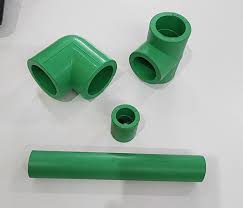Dec . 19, 2024 23:40 Back to list
ppr for hot water product
Understanding the Role of PPR in Hot Water Systems
Polypropylene Random Copolymer (PPR) pipes and fittings have become increasingly popular in various plumbing and construction applications, particularly in hot water systems. This article delves into the characteristics of PPR, its advantages in hot water applications, and the considerations to take into account when implementing these systems.
What is PPR?
PPR is a type of plastic polymer primarily composed of polypropylene, a versatile thermoplastic. PPR pipes are known for their durability, resistance to corrosion, and ability to withstand high temperatures and pressures, making them an ideal choice for hot water transportation systems. The random copolymer structure of PPR enhances its flexibility and mechanical properties, positioning it as a preferred material for both residential and industrial plumbing.
Advantages of PPR for Hot Water Applications
1. Temperature Resistance One of the key benefits of PPR pipes is their ability to handle high temperatures. PPR can withstand temperatures up to 95°C (203°F) without compromising structural integrity. This characteristic is crucial for hot water applications, where pipes are frequently subjected to elevated temperatures.
2. Corrosion Resistance Unlike metallic pipes, which can corrode over time due to exposure to water and minerals, PPR pipes are inherently resistant to rust and corrosion. This longevity translates to lower maintenance costs and fewer replacements over the lifespan of the plumbing system.
3. Low Thermal Conductivity PPR pipes have a low thermal conductivity, which minimizes heat loss during water transport. This property is particularly beneficial in hot water systems as it helps maintain the temperature of the water, thereby improving energy efficiency and reducing heating costs.
4. Ease of Installation PPR pipes are lightweight and easy to handle. Their installation typically involves heat fusion techniques, which create a seamless bond between joints. This process not only speeds up installation time but also enhances the strength of the connections, further ensuring the system's reliability.
5. Cost-Effectiveness While the initial cost of PPR piping may be higher than that of traditional materials like PVC or metal, the long-term savings due to their durability and low maintenance needs make them a cost-effective choice. Additionally, the energy savings from reduced heat loss add to their economic advantages.
ppr for hot water product

6. Health and Safety PPR pipes are non-toxic and do not leach harmful chemicals into the water supply. This makes them a safe option for potable hot water systems, aligning with health and safety regulations.
Considerations for Implementing PPR in Hot Water Systems
Despite the numerous advantages of PPR, there are essential factors to consider when designing and implementing hot water systems using this material
1. Installation Standards It is crucial to adhere to local plumbing codes and standards during the installation of PPR piping. Proper installation techniques should be followed to ensure maximum performance and longevity.
2. Pressure Ratings PPR pipes come in various pressure ratings, and selecting the appropriate type for the specific application is vital. Understanding the pressure requirements of the hot water system will help in choosing the right grade of PPR material.
3. Thermal Expansion Like all materials, PPR pipes expand and contract with temperature changes. It is important to account for thermal expansion in the system design to prevent deformation or damage over time.
4. Compatibility Ensure that PPR fittings and accessories are compatible with the PPR pipes being used. Using mismatched components can compromise the integrity of the system.
Conclusion
PPR pipes offer a robust, efficient, and safe solution for hot water applications. Their durability, resistance to corrosion, and energy efficiency make them a compelling choice for modern plumbing systems. By recognizing the considerations for proper installation and applying best practices, homeowners and plumbers can harness the advantages of PPR technology, ensuring reliable hot water delivery for years to come. As the demand for sustainable and efficient plumbing solutions continues to grow, PPR is poised to be a leading material in the industry.
-
High-Quality PVC Borehole Pipes Durable & Versatile Pipe Solutions
NewsJul.08,2025
-
High-Quality PVC Perforated Pipes for Efficient Drainage Leading Manufacturers & Factories
NewsJul.08,2025
-
High-Quality PVC Borehole Pipes Durable Pipe Solutions by Leading Manufacturer
NewsJul.08,2025
-
High-Quality PVC Borehole Pipes Reliable PVC Pipe Manufacturer Solutions
NewsJul.07,2025
-
High-Quality UPVC Drain Pipes Durable HDPE & Drain Pipe Solutions
NewsJul.07,2025
-
High-Quality Conduit Pipes & HDPE Conduit Fittings Manufacturer Reliable Factory Supply
NewsJul.06,2025

